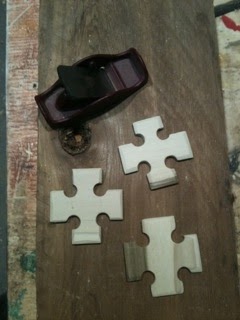The two photos above show my take on the ever present work bench challenge.
Five or six years ago I was working in a much smaller workshop than I do now. Then as now I was trying to maximize work space. Everything needed to be on wheels, but a sturdy bench/work table was also required, I didn't really believe that the "bench" could move. My solution was to build my rolling heavy duty work table/bench/storage cabinet.
Three years ago when I got more shop space it was my plan to get rid of this
Rolling Work Bench. However there was work to do and not enough time to explore the possibilities of a replacement work bench. So what I ended up doing was modifying the Rolling Work Bench as a stop gap measure. I made it easier to clamp to the top and sides, also I moved my vice onto this work table from my small and awkward bench. I have to admit it works for me.
The basic design is 35 inches tall to the work surface which is 40 by 40 inches and 1 1/2 inch thick. The base compartments are made from 3/4 plywood and divided into four sections, that way the base layer is very very stable and the second layer is just as stable. I bought two very good locking casters and then put two stout legs under the other side.
The work table is not so heavy that I can't move it when I choose, but it is heavy enough that I seldom have to lock the casters. The height is good for most projects to sit on top and still be at a good level for work. I have repaired and re-glued many chairs on this work table. Since the table is so stout it also acts as my workbench. Since it has access on four sides when needed, I have able to plane, re-saw and manage sheet stock (with a little help) on this work surface.
With the 1 1/2 top standing on spacers I can clamp on all four sides and use the space under the top for tool storage while working. The power bar is used occasionally, when I need to plug in a battery of drills and sanders it means that I have only one extension chord running across the floor. Finally the best part is for production type jobs it matches up with the out feed on my planner.(the planner is also on wheels)
In the left hand photo you can barely see my "work bench' behind the movable table. The work bench is where I do small projects, carving or finishing while sitting on a tall stool, to save my back. The build quality of the movable bench is not very high, it was built in haste, of construction grade materials with a brief future in mind. My Rolling Workbench has turned out to be very usable and quite flexible thus a lucky inspiration.















